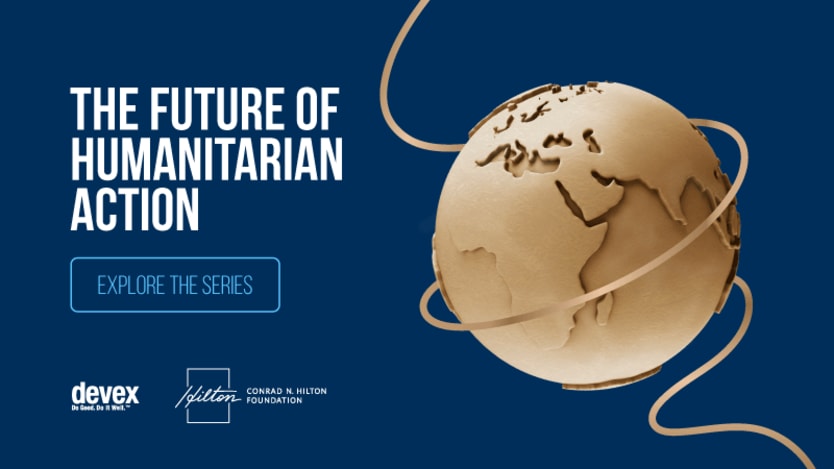A transition from humanitarian support to “catalytic domestic aid” as the main source of financing and the shifting of power to local communities are among the biggest changes the humanitarian sector has seen in recent decades, according to Dr. Githinji Gitahi, group CEO at Amref Health Africa.
“That power shift has been seen in not only the way organizations are running and operating, but also in the way that development partners are behaving by putting people at the center of the design of the work and also at the center of the response,” he said.
Across Africa, Amref — which was awarded the Conrad N. Hilton Humanitarian Prize in 1999 — works with local leaders to address specific health issues in the region while building health system capacity.
In Samburu county, Kenya, Assistant Chief Patrick Lembwakita is one such local leader. In collaboration with Amref and other stakeholders, he works to sensitize his community about the consequences of female genital mutilation and early and child marriage. “It is very important that this process is community-led and community-sustained,” Lembwakita said.
Yet finding flexible funding to take such community and people-centered approaches can be a challenge. For an organization like Amref that is headquartered in the global south, Gitahi said fundraising capacity is minimal and so, therefore, is sourcing unrestricted funding.
Going forward, this means there will have to be a further shift of power from donors to those who receive funding so that communities and people themselves are more in control of the solutions being implemented, he said.
Visit the future of humanitarian action series for more coverage on the pressing humanitarian issues that exist today and a discussion around how we must build our future together. You can join the conversation using the hashtag #humanitarianfuture.






